Occhi di Lupo (wolf’s eyes): Dried Pasta from Naples.
Occhi di lupo means wolf’s eyes! Actually, many Italian pasta shapes have names inspired by the natural world. Among those I’ve featured here on The Pasta Project are farfalle (meaning butterflies), conchiglie (shells), lumache (snails), calamarata (calamari) and vermicelli (little worms). However, there are many more to write about and cook with, for example creste di gallo (cock’s comb), code di rondine (swallow’s tails) and occhi di passero (sparrow’s eyes).
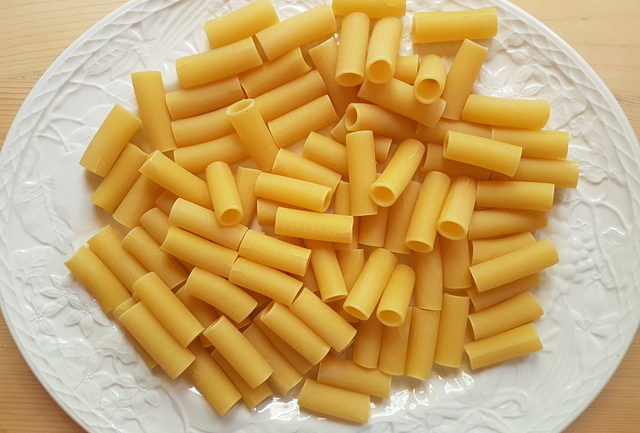
Why wolf’s eyes?
Most pasta companies that make this pasta shape (and there are many) say this pasta is called occhi di lupo because when you look at the pasta tube from the end, the cross section resembles a wolf’s pupil! Perhaps at a stretch of the imagination!
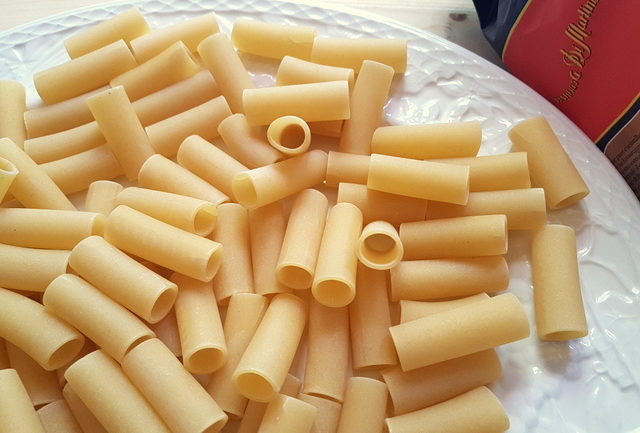
However, the wolf is an important animal in Italian culture and folklore.The eye of the wolf is said to cast a spell that will take away a man’s voice! In addition, a very common Italian expression meaning good luck, or break a leg, is ‘in bocca al lupo’! This translate to ‘in the mouth of the wolf’! Also, it is traditional for Italian opera singers to raise a toast to the wolf before going on stage! Actually, the list of wolf references in Italian history and folklore is pretty lengthy. So, I guess that is why this pasta is called occhi di lupo rather than after another animal.

Where is occhi di lupo pasta from?
Although the origins of this pasta shape have been lost, this is definitely considered to be a typical Southern Italian pasta particularly from Naples in Campania. Many Neapolitan pasta companies, including those who make Pasta di Gragnano IGP produce a version of occhi di lupo pasta.
Who makes this pasta?
This pasta is a largish pasta tube most often made with a smooth surface, although I have seen some ridged versions (rigate). Many companies also make mezzi occhi di lupo which are half sized wolf’s eyes pasta. I have noticed that there are slight variations in the size of this pasta. Some companies make it wider than others. It seems that there isn’t a standard size.
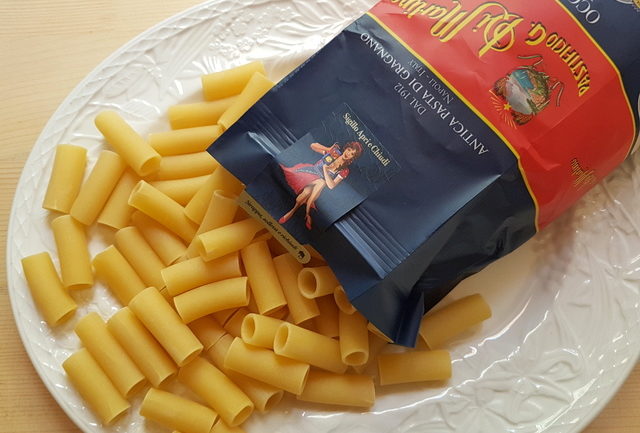
As I mentioned above a lot of companies make this pasta shape here in Italy, although I don’t know how available it is abroad. Among the brands that I know of are Pasitificio dei Campi, Di Martino, Divella, Garofalo, Granoro, D’Aragona and Gragnanesi. Of course there are more.
Recipes for wolf’s eyes pasta!
Italians use both occhi di lupo and mezzi occhi di lupo in all kinds of recipes. This pasta is great with a meat sauce or seafood or just vegetables. It can also be baked and even filled. The filling is usually ricotta. The first recipe I have posted with occhi di lupo pasta is a Sicilian one with ricotta and pistachio. This is a wonderful easy to make light summer pasta recipe.

I’m looking forward to using this pasta in more dishes and sharing those recipes here on The Pasta Project.In the meantime, there are a number of recipes made with other pasta which would work well with occhi di lupo. Here are a few to check out.
- Calamarata pasta with cuttlefish and peas recipe from Naples
- Elicoidali with Tropea onions; recipe from Calabria
- Pasta alla Pastora; recipe from the Alto-Adige
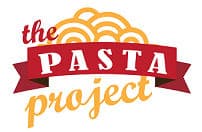

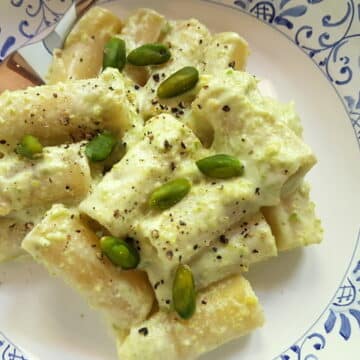
Dan Doherty says
This is the best thing I have ever read on Occhi di Lupo! I have been wondering about it for decades. Those photos of it are EXACTLY how I remember it. It brings back many memories. To this day, every time I go to the macaroni aisle in the supermarket (in the USA), I look for it. But I never find it. And the information on it is very interesting and educational. And the recipes for it are wonderful! Thank you so much!
Kelly Anthony says
I always enjoy reading the history and stories behind the pasta. I found this post most interesting that the wolf plays a large part in the Italian folklore and history.